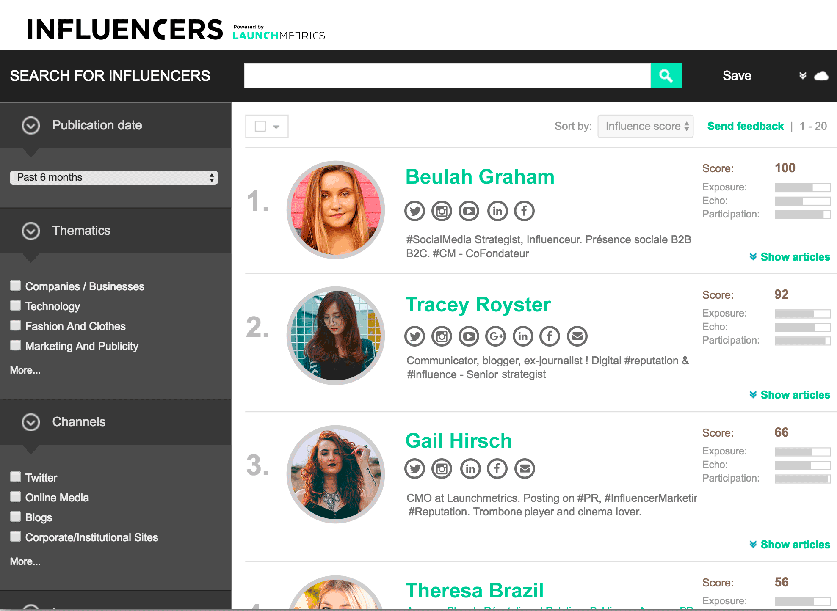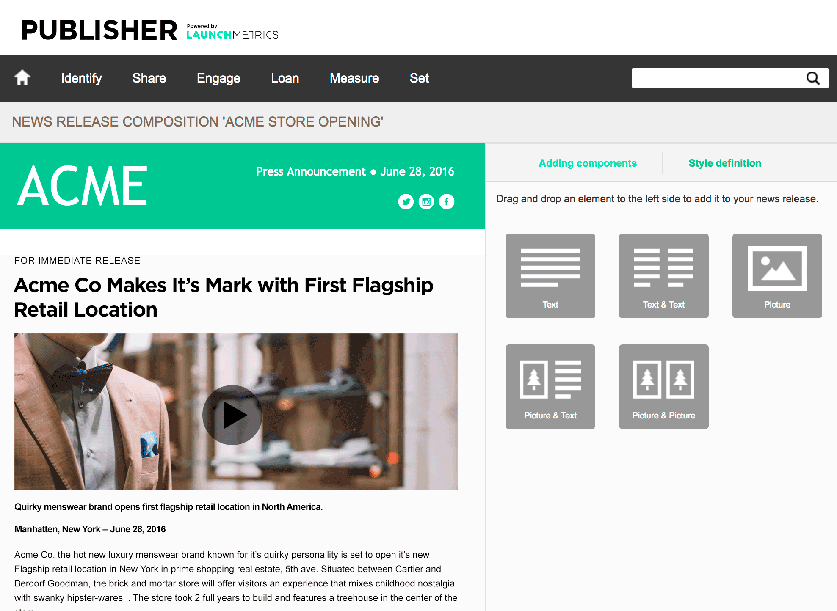According to our latest study on The State of Influencer Marketing in 2015, 93% of those surveyed said that their current relationship with influencers brought them real profits.
And you’ll ask: “Real profits? How is that measured? And that’s what this post is about, to show you how to easily analyze campaigns with influencers.
In this article you’ll learn…
Measure the success of your campaigns with influencers
According to the WOMMA (Word of Mouth Marketing Association), before initiating a campaign with influencers you should take two things into account:
- The influence potential before the campaign.
- Influence observed during and after the campaign.
This influence does not refer to the influencer’s general influence, but his/her specific influence with your brand. But, please bear in mind that what’s important isn’t how much audience the influencer reaches but what audience they reach. Never forget who your target is, everything hinges on your audience. Nothing is gained by working with a super influential person outside your sector or industry.
In order to measure the potential before the campaign, WOMMA recommends assessing some basic aspects of the influencer:
- The volume of offline conversations and brand awareness
- Influence on third parties
- The individual’s feelings towards your brand or subject matter
- Quality and quantity of their content
- The size of their network of influence and the main reason people follow this influencer.
- The individual’s authority, trustworthiness and credibility (in relation to the main theme).
Nowadays, there are many tools that can help you obtain information on each of these points. This process may be complex, but if you don’t do it well and choose the right influencer, you’ll be wasting all the effort you put into the campaign before starting.
At Launchmetrics, we try to transfer these types of influencer identification needs to a scoring system with over 100 parameters, which we have summarised in three points:
- Exposure: the size of the community or audience the influencer has on the subject (including all the channels that generate content: social media, media, blogs…).
- Participation: the level of the influencer’s participation in the conversation on a specific subject.
- Echo: the ability of the influencer to generate reactions in the audience through their publications on a specific subject.
In order to evaluate the influence observed during and after the campaign it’s important to compare with past influence.
NB: before starting any campaign it’s essential to establish your objectives beforehand. It’s important to set measurable objectives so you can see whether or not the campaign has been a success. Once the campaign has been launched you should track its progress to analyse changes brought about by the influencer’s interaction.
In order to obtain more reliable and objective data, enter tracking codes in the different actions of the campaign on different channels. On the other hand, it will be necessary to scour the Internet to not miss possible interactions both on social media and online.
Publisher is a tool designed to track online interactions. You can configure it so that you receive email updates of the matches the tool finds online with the interaction you want, on the Internet, on blogs and social media.
“OK, I’ve done what you said, I’ve tracked all my campaigns, interactions with the content and posts published by the influencer. I now have loads of numbers. Now, what am I looking for?”
Good question my dear Lauchmetrics user.
Metrics to evaluate the influence detected
- Number of conversations on the campaign or subject of interest.
- Comments on the content created by the influencer.
- Total number of influencers we interact with / Total number of influencers who publish about our brand.
- Referred traffic from influencer content. (*This can be seen on Google Analytics, observing the source of traffic. Referred traffic is traffic that lands on our page directly from a link on another page. Referred traffic from social media is in the Social section).
- Conversions (purchases, registrations) attributed to the influencer’s posts.
These are some examples along general lines. These are generally: traffic, shares on social media, links to your content from other sites, mentions, sales… But all this depends on the objectives you set before starting the campaign. If you are launching a product and you want sales, your metrics won’t be about traffic volume but more about qualified traffic to obtain sales. Therefore, mentions on other sites won’t be so important as measuring the bounce rate, the step where users leave the conversion funnel, etc. If, on the other hand, you’re not interested in direct sales and your campaign is to promote a new website, you’ll be more interested in traffic volumes, pages per session and average time on site (to check the quality of your website, if it is attractive, which content engages more….).
Therefore, again, what’s important is knowing what you want to achieve, your objectives, and planning how you are going to measure them, what KIPs or metrics you should be tracking depending on these objectives.



dexter
Hello Alvaro, thanks for the great infos. very helpful.
Note: the scoring sheet template link is broken and i am not able to download.
thanks
Alvaro Alberdi
Hi Dexter! I'm sorry, this post is outdated and the template is no longer available (I'll remove it from the post). If you are interested in Influencers, we have just launched our State of Influencer Report 2017
Apologies and thanks! 🙂